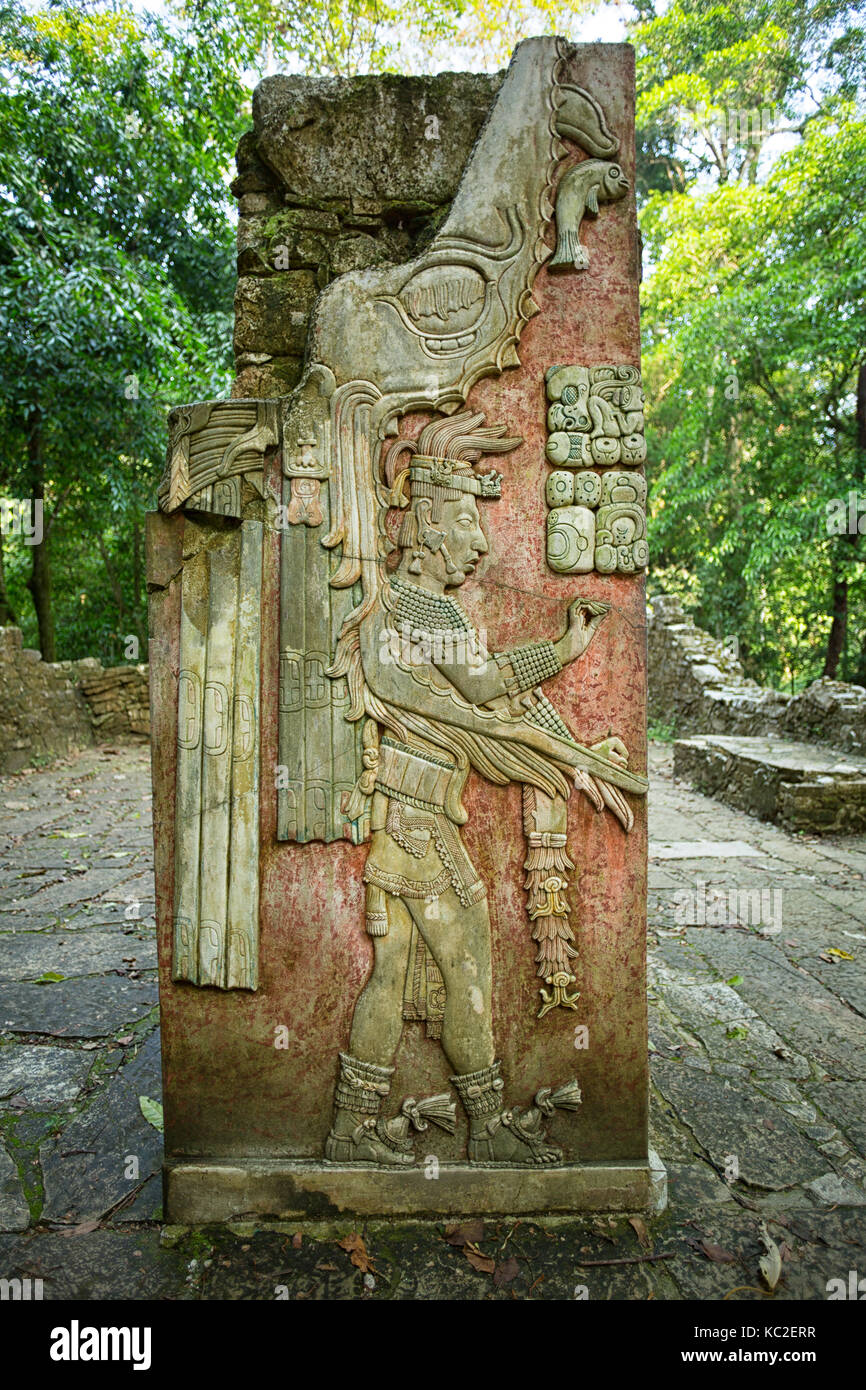A painted stucco relief in the museum at Palenque, a Maya ruin in Chiapas, Mexico, from one of the recently excavated buildings.
It shows U Pakal K´inich, who ascended to throne of Palenque between 736-742 AD – Palenque is a Mayan archaeological site located in the Mexican state of Chiapas, not far from the Usumacinta River and about 130 km south of Ciudad del Carmen. It is a medium-sized site, smaller than Tikal and Copán, but contains some of the finest architecture and sculpture that the Maya produced.

The area covers approximately 2.5 km², but it is estimated that less has been explored of 10% of the total surface area that reached the city, as many structures still remain covered by the forest. In 1981 Palenque was designated a “Protected Zone” and in 1987 UNESCO declared it a World Heritage Site.
#archaeohistories






